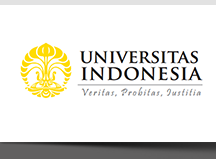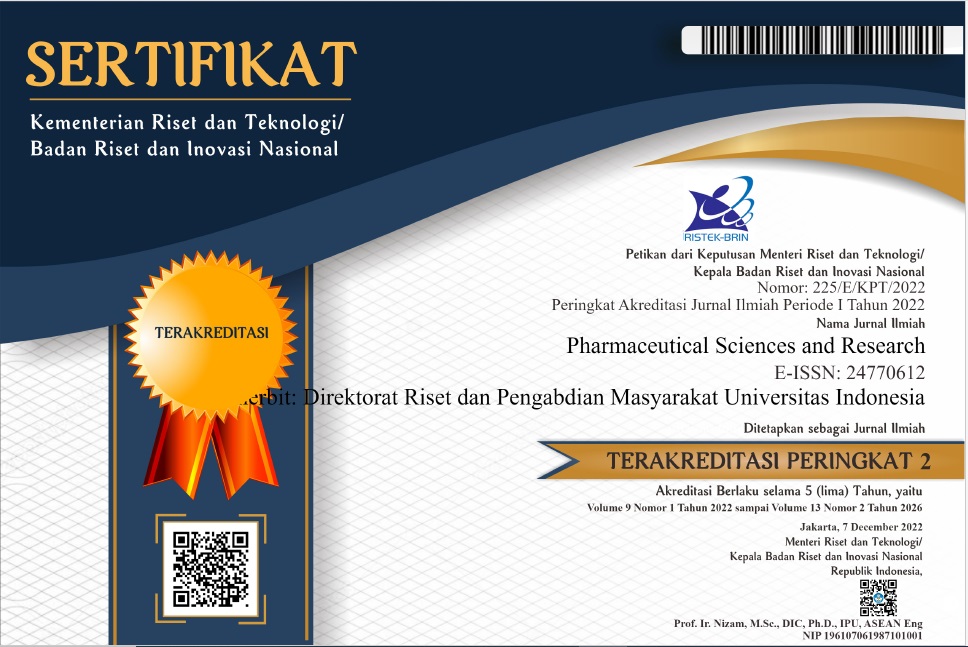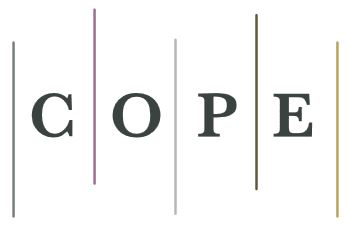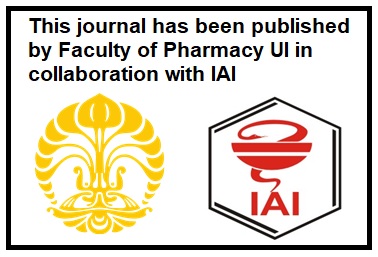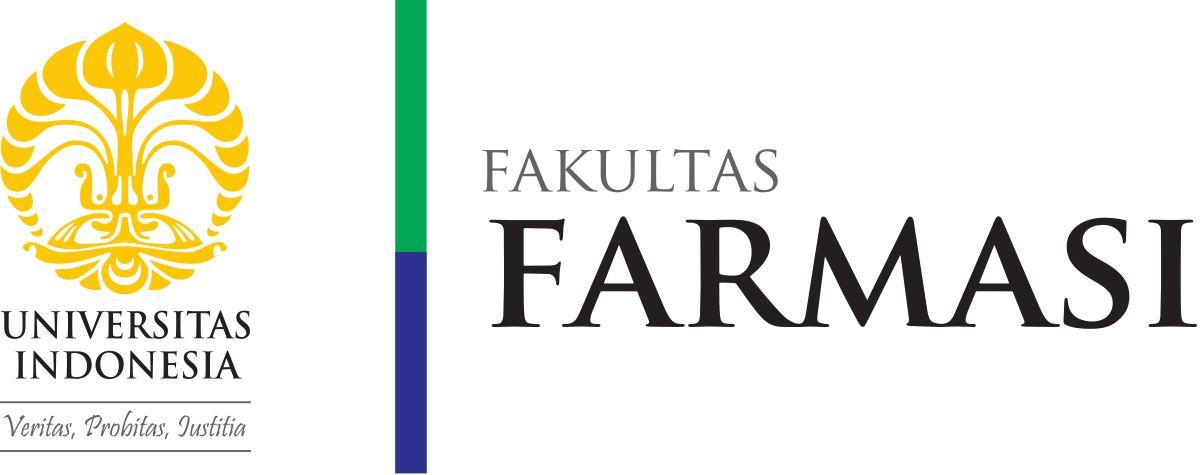Abstract
Leguminosae, also known as Fabaceae, is the third largest plant family after Orchidaceae and Asteraceae. This review aimed to explore the potential of several legume species indigenous to Indonesia, from the Leguminosae family, as sources of food and medicine. The data used for the analysis were collected from various online databases such as PubMed, ScienceDirect, and Google Scholar. The results showed that there were 13 species of Leguminosae family plants found easily in Indonesia including Cajanus cajan, Canavalia ensiformis, Mucuna pruriens, Arachis hypogaea, Vigna subterranea, Glycine max, Phaseolus vulgaris, Phaseolus lunatus, Vigna radiata, Vigna unguiculata subsp. unguiculata, Vigna angularis, Vigna unguiculata subsp. sesquipedalis, and Pisum sativum. Among these species, several plants have been underutilized as food material, including C. cajan, C. ensiformis, M. pruriens, and P. lunatus. These 13 legume plants generally contain carbohydrates, proteins, starch, fats, and minerals, making them valuable as potential food sources. They also predominantly contain secondary metabolites, such as polyphenols and flavonoids (e.g., genistein, daidzein, cajanin), which have significant potential to be developed into pharmacologically active compounds.
References
Abu-Reidah, I. M., Arráez-Román, D., Lozano-Sánchez, J., Segura-Carretero, A., & Fernández-Gutiérrez, A. (2013). Phytochemical characterisation of green beans (Phaseolus vulgaris L.) by using high-performance liquid chromatography coupled with time of flight mass spectrometry. Phytochemical Analysis, 24(2), 105-116. https://doi.org/10.1002/pca.2385
Adama, K., Almamy, K., Isidore, G. B., Bernadette, Y., Amadou, T., Aziz, T. A., . . . Gaston, B. (2016). Seed germination and anthelmintic activity of Cajanus cajanon sheep. Journal of Chemical and Pharmaceutical Research, 8(1), 403-410
Ahmad, F., Anwar, F., & Hira, S. (2016). Review on medicinal importance of Fabaceae family. Pharmacologyonline, 3, 151-157
Ahmad, S., Kashif, M., Sattar, A., Qayyum, A., Sami, U.-A., Nawaz, A., & Manaf, A. (2019). Characterization of peanut (Arachis hypogaea L.) germplasm for morphological and quality traits in an arid environment. Turkish Journal of Field Crops, 24(2), 132-137. https://doi.org/10.17557/tjfc.615176
Ajaiyeoba, E., Ogbole, O., Abiodun, O., Ashidi, J., Houghton, P., & Wright, C. W. (2013). Cajachalcone: an antimalarial compound from Cajanus cajan leaf extract. Journal of Parasitology Research, 2013(1), 703781. https://doi.org/10.1155/2013/703781
Alam, A. K., & Khatun, C. S. (2016). Phytochemical analysis and antioxidant, analgesic and thrombolytic activity investigation of methanol extract of Pisum sativum seed. Journal of Pharmacognosy and Phytochemistry, 5(6), 366-370
Apriandini, L., Hanafi, M., Djamil, R., Desmiaty, Y., Lotulung, P. D. N., & Artanti, N. (2023). Antioxidant and Antidiabetic Compounds from Ebony Leaf Extract (Diospyros celebica Bakh.) and Their Correlation with Total Phenolic and Flavonoid Compounds in Various Solvent Extraction. Journal of Natural Product for Degenerative Diseases, 1(1), 8-18. https://doi.org/10.58511/jnpdd.v1i1.5454
Arifin, S. N., Pratiwi, D., & Setiawan, A. A. (2017). Studi in silico Senyawa Flavonoid dari Ekstrak Kacang Panjang (Vigna sinensis L.) sebagai Penumbuh Rambut dengan Reseptor Androgen. Jurnal Farmagazine, 4(2), 31-37. http://dx.doi.org/10.47653/farm.v4i2.83
Arinanti, M. (2018). Potensi senyawa antioksidan alami pada berbagai jenis kacang. Ilmu Gizi Indonesia, 1(2), 134-143. https://doi.org/10.35842/ilgi.v1i2.7
Arise, A. K., Alashi, A. M., Nwachukwu, I. D., Ijabadeniyi, O. A., Aluko, R. E., & Amonsou, E. O. (2016). Antioxidant activities of bambara groundnut (Vigna subterranea) protein hydrolysates and their membrane ultrafiltration fractions. Food & Function, 7(5), 2431-2437. https://doi.org/10.1039/C6FO00057F
Arora, M., Singh, S., & Kaur, R. (2013). Phytochemical analysis, protein content & antimicrobial activities of selected samples of Glycine max Linn. International Journal of Research in Engineering and Technology, 2(11), 570-574
Baby, C., Kaur, S., Singh, J., & Prasad, R. (2023). Velvet bean (Mucuna pruriens): A sustainable protein source for tomorrow. Legume Science, 5(3), e178. https://doi.org/10.1002/leg3.178
Bak, S. G., Lim, H. J., Park, E. J., Won, Y. S., Lee, S. W., Lee, S., . . . Rho, M.-C. (2023). Effects of Vigna angularis extract and its active compound hemiphloin against atopic dermatitis-like skin inflammation. Heliyon, 9(2). https://doi.org/10.1016/j.heliyon.2023.e12994
Bria, E. J. (2017). Studi Karakter Morfologis Serbuk Sari Kacang Kratok (Phaseolus lunatus L.) menggunakan Scanning Electron Microscope sebagai Media Belajar Biologi SMA. BIO-EDU: Jurnal Pendidikan Biologi, 2(1), 1-2
Cahyani, D. N., Lestari, F., & Choesrina, R. (2015). Uji Aktivitas Antihiperglikemia Kombinasi Jus Kacang Panjang (Vigna unguiculata L. Walp) dan Jus Tomat (Solanum lycopersicum L.) pada Mencit Swiss Webster Jantan dengan Metode Induksi Aloksan. Prosiding Farmasi, 382-387
Camalxaman, S. N., Zain, Z. M., Amom, Z., Mustakim, M., Mohamed, E., & Rambely, A. S. (2013). In vitro antimicrobial activity of Vigna radiata (L) Wilzeck extracts against gram negative enteric bacteria. World Applied Sciences Journal, 21(10), 1490-1494. https://doi.org/10.5829/idosi.wasj.2013.21.10.2133
Cao, J. Q., Zhang, Y., Cui, J. M., & Zhao, Y. Q. (2011). Two new cucurbitane triterpenoids from Momordica charantia L. Chinese Chemical Letters, 22(5), 583-586. https://doi.org/10.1016/j.cclet.2010.11.033
Castaldo, L., Izzo, L., Gaspari, A., Lombardi, S., Rodríguez-Carrasco, Y., Narváez, A., . . . Ritieni, A. (2021). Chemical Composition of green pea (Pisum sativum L.) pods extracts and their potential exploitation as ingredients in nutraceutical formulations. Antioxidants, 11(1), 105. https://doi.org/10.3390/antiox11010105
Chalid, S. Y., Muawanah, A., Nurbayti, S., & Utami, W. M. (2021). Characteristics and antioxidant activity of kidney bean (Phaseolus vulgaris L.) tempeh as functional food. Paper presented at the AIP Conference Proceedings. https://doi.org/10.1063/5.0041748
Chen, X., Lu, Q., Liu, H., Zhang, J., Hong, Y., Lan, H., . . . Li, S. (2019). Sequencing of cultivated peanut, Arachis hypogaea, yields insights into genome evolution and oil improvement. Molecular Plant, 12(7), 920-934. https://doi.org/10.1016/j.molp.2019.03.005
Chinapolaiah, A., Manjesh, G., Thondaiman, V., & Rao, V. K. (2019). Variability in L-Dopa and other biochemical composition of Mucuna pruriens (L.) an underutilized tropical legume. Industrial Crops and Products, 138, 111447. https://doi.org/10.1016/j.indcrop.2019.06.010
Chinnapun, D., & Sakorn, N. (2022). Structural characterization and antioxidant and anti-inflammatory activities of new chemical constituent from the seeds of bambara groundnut (Vigna subterranea (L.) Verdc.). CyTA-Journal of Food, 20(1), 93-101. https://doi.org/10.1080/19476337.2022.2087741
Choi, H., Park, J.-S., Kim, K.-M., Kim, M., Ko, K.-W., Hyun, C.-G., . . . Kim, S.-Y. (2018). Enhancing the antimicrobial effect of genistein by biotransformation in microbial system. Journal of Industrial and Engineering Chemistry, 63, 255-261. https://doi.org/10.1016/j.jiec.2018.02.023
Ciau-Solís, N. A., Acevedo-Fernández, J. J., & Betancur-Ancona, D. (2018). In vitro renin–angiotensin system inhibition and in vivo antihypertensive activity of peptide fractions from lima bean (Phaseolus lunatus L.). Journal of the Science of Food and Agriculture, 98(2), 781-786. https://doi.org/10.1002/jsfa.8543
Dahiya, P., Linnemann, A., Van Boekel, M., Khetarpaul, N., Grewal, R., & Nout, M. (2015). Mung bean: Technological and nutritional potential. Critical Reviews in Food Science and Nutrition, 55(5), 670-688. https://doi.org/10.1080/10408398.2012.671202
Damara, H. L., Santika, I. W., & Waluyo, B. (2020). Keragaman dan Korelasi Karakteristik Fisik Biji dengan Perkecambahan dan Karakter Hasil pada Kacang Ercis (Pisum sativum L.). Plantropica: Journal of Agricultural Science, 5(1), 74-84. https://doi.org/10.21776/ub.jpt.2020.005.1.9
Devade, O., Mehta, S. A., Lohare, S. B., Tawakale, R. S., & Jadhav, D. Y. (2022). Assessment of Anthelmintic Activity of Pisum sativum. International Journal of Pharmaceutical Sciences and Research, 12(2), 7-12
Diniyah, N., & Lee, S.-H. (2020). Komposisi senyawa fenol dan potensi antioksidan dari kacang-kacangan. Jurnal Agroteknologi, 14(01), 91-102
Doss, A., Pugalenthi, M., & Vadivel, V. (2011). Antioxidant activity of raw and differentially processed under-utilized tropical legume Canavalia ensiformis L. DC seeds, South India. The IIOAB Journal, 2(8), 27-32
Ezeagu, I. E., & Ibegbu, M. D. (2010). Biochemical composition and nutritional potential of ukpa: a variety of tropical lima beans (Phaseolus lunatus) from Nigeria-a short report. Polish Journal of Food and Nutrition Sciences, 60(3), 44-51. https://doi.org/10.24831/jai.v48i1.27597
Fadillah, R., & Purnamawati, H. (2020). Produksi Kacang Tunggak (Vigna unguiculata [L.] Walp) dengan Input Pupuk Rendah. Indonesian Journal of Agronomy, 48(1), 44-51
Firdousi, S., Chakraborty, R., & Roy, S. (2021). Nutritional and Antioxidant Properties of the Seeds of Vigna unguiculata subsp. sesquipedalis (L.) Verdc.–An Underutilized Legume of West Bengal. NBU Journal of Plant Sciences, 13, 27-41. https://doi.org/10.55734/NBUJPS.2021.v13i01.004
Fuller, D. Q., Murphy, C., Kingwell-Banham, E., Castillo, C. C., & Naik, S. (2019). Cajanus cajan (L.) Millsp. origins and domestication: the South and Southeast Asian archaeobotanical evidence. Genetic Resources and Crop Evolution, 66(6), 1175-1188. https://doi.org/10.1007/s10722-019-00774-w
Ganesan, K., & Xu, B. (2018). A critical review on phytochemical profile and health promoting effects of mung bean (Vigna radiata). Food Science and Human Wellness, 7(1), 11-33. https://doi.org/10.1016/j.fshw.2017.11.002
Gargi, B., Semwal, P., Jameel Pasha, S. B., Singh, P., Painuli, S., Thapliyal, A., & Cruz-Martins, N. (2022). Revisiting the Nutritional, Chemical and Biological Potential of Cajanus cajan (L.) Millsp. Molecules, 27(20), 6877. https://doi.org/10.3390/molecules27206877
Gul, A., Khan, H., Shah, S. I., Alsharif, K. F., Qahl, S. H., Rehman, I. U., . . . Ming, L. C. (2023). Pharmaceutical development of intraperitoneal Arachis hypogaea as a renal protective agent. Frontiers in Bioscience-Landmark, 28(1), 14. https://doi.org/10.31083/j.fbl2801014
Han, D.-G., Bae, M.-J., & An, B.-J. (2022). Anti-Inflammatory Activity of Velvet Bean (Mucuna pruriens) Substances in LPS− Stimulated RAW 264.7 Macrophages. Molecules, 27(24), 8797. https://doi.org/10.3390/molecules27248797
Haq, S. K., & Khan, R. H. (2003). Characterization of a proteinase inhibitor from Cajanus cajan (L.). Journal of Protein Chemistry, 22, 543-554. https://doi.org/10.1023/B:JOPC.0000005504.57372.5b
Harmayetty, I. K., & Anisa, F. (2015). Jus Kacang Panjang (Vigna sinensis L.) menurunkan Kadar Glukosa Darah Pasien Diabetes Mellitus. Jurnal Ners, 4(2), 116-121
Hasan, M. M., Cha, M., Bajpai, V. K., & Baek, K.-H. (2013). Production of a major stilbene phytoalexin, resveratrol in peanut (Arachis hypogaea) and peanut products: a mini review. Reviews in Environmental Science and Bio/Technology, 12, 209-221. https://doi.org/10.1007/s11157-012-9294-7
Heuzé, V., Tran, G., & Lebas, F. (2020). Bambara groundnut (Vigna subterranea) haulms. Feedipedia, a programme by INRAE, CIRAD, AFZ and FAO. https://feedipedia.org/node/531.
Hou, D., Yousaf, L., Xue, Y., Hu, J., Wu, J., Hu, X., . . . Shen, Q. (2019). Mung bean (Vigna radiata L.): Bioactive polyphenols, polysaccharides, peptides, and health benefits. Nutrients, 11(6), 1238. https://doi.org/10.3390/nu11061238
Ivantirta, I. (2019). Efek Antihiperglikemi Kacang Panjang (Vigna unguiculata). Jurnal Ilmiah Kesehatan Sandi Husada, 8(2), 359-362. https://doi.org/10.35816/jiskh.v10i2.191
Jannah, A. R., Ebnudesita, F. R., Dienanta, S. B., & I’tishom, R. (2020). The potential of soy isoflavones (Glycine max) and magnetic hydroxyapatite nanoparticles as osteoporosis therapy for menopausal women. Indonesian Andrology and Biomedical Journal, 1(1), 27-35. https://doi.org/10.20473/iabj.v1i1.29
Jeong, E.-W., Park, S.-Y., Yang, Y.-S., Baek, Y.-J., Yun, D.-M., Kim, H.-J., . . . Lee, H.-G. (2021). Black soybean and adzuki bean extracts lower blood pressure by modulating the renin-angiotensin system in spontaneously hypertensive rats. Foods, 10(7), 1571. https://doi.org/10.3390/foods10071571
Jiang, S., Ma, Y., & Yan, D. (2014). Antioxidant and antimicrobial properties of water soluble polysaccharide from Arachis hypogaea seeds. Journal of Food Science and Technology, 51, 2839-2844. https://doi.org/10.1007/s13197-012-0786-9
Johnson, J. B., Neupane, P., Bhattarai, S. P., Trotter, T., & Naiker, M. (2023). Phenolic profiles and acetylcholinesterase inhibitory activity in Australian adzuki bean. Food Chemistry Advances, 3, 100361. https://doi.org/10.1016/j.focha.2023.100361
Kan, L., Nie, S., Hu, J., Wang, S., Cui, S. W., Li, Y., . . . Bai, Z. (2017). Nutrients, phytochemicals and antioxidant activities of 26 kidney bean cultivars. Food and Chemical Toxicology, 108, 467-477. https://doi.org/10.1016/j.fct.2016.09.007
Karri, V. R., & Nalluri, N. (2017). Pigeon pea (Cajanus cajan L.) by-products as potent natural resource to produce protein rich edible food products. International Journal of Current Agricultural Sciences, 7(07), 229-236
Kaswinarni, F., Suharno, B., & Winarta, O. (2014). Berbagai Fenomena Kacang Panjang (Vigna sinensis) terhadap Penambahan Kompos Organik Pada Pemupukan Batuan Fosfat. Bioma: Jurnal Ilmiah Biologi, 3(1), 16-26. https://doi.org/10.26877/bioma.v3i1,%20April.647
Khanum, R., Mazhar, F., & Jahangir, M. (2015). Antioxidant evaluations of polar and non-polar fractions of Cajanus cajan seeds. Journal of Medicinal Plants Research, 9(6), 193-198. https://doi.org/10.5897/JMPR2014.5456
Kotkar, A., Bhangale, D. C. J., Aher Vandana, P., & Vaditke, K. (2020). A study on Anthelmintic Activity of Canavalia ensiformis (Jack bean) Pods. International Journal of Innovative Science and Research Technology, 5(10), 798-802
Lampariello, L. R., Cortelazzo, A., Guerranti, R., Sticozzi, C., & Valacchi, G. (2012). The magic velvet bean of Mucuna pruriens. Journal of Traditional and Complementary Medicine, 2(4), 331-339. https://doi.org/10.1016/S2225-4110(16)30119-5
Liu, R., Zheng, Y., Cai, Z., & Xu, B. (2017). Saponins and flavonoids from adzuki bean (Vigna angularis L.) ameliorate high-fat diet-induced obesity in ICR mice. Frontiers in Pharmacology, 8, 687. https://doi.org/10.3389/fphar.2017.00687
Liu, W., Ma, H., DaSilva, N. A., Rose, K. N., Johnson, S. L., Zhang, L., . . . Seeram, N. P. (2016). Development of a neuroprotective potential algorithm for medicinal plants. Neurochemistry International, 100, 164-177. https://doi.org/10.1016/j.neuint.2016.09.014
Mahardhika, B. P., Ridla, M., Mutia, R., Febriani, S., & Purbaya, A. M. (2023). The evaluation of the use of jack bean (Canavalia ensiformis) and protease enzyme on the broiler diet with the different level of protein. Livestock and Animal Research, 21(2), 69-79. https://doi.org/10.20961/lar.v21i2.63459
Malenčić, D., Popović, M., & Miladinović, J. (2007). Phenolic content and antioxidant properties of soybean (Glycine max (L.) Merr.) seeds. Molecules, 12(3), 576-581. https://doi.org/10.3390/12030576
Miftahul, S., & Sopandi, T. (2016). Pemanfaatan kacang tunggak (Vigna unguiculata) ditambah air siwalan (Borassus flabellifer) sebagai bahan baku pembuatan kecap. STIGMA: Jurnal Matematika dan Ilmu Pengetahuan Alam Unipa, 9(01), 19-25. https://doi.org/10.36456/stigma.vol9.no01.a328
Mingrou, L., Guo, S., Ho, C.-T., & Bai, N. (2022). Review on chemical compositions and biological activities of peanut (Arachis hypogeae L.). Journal of Food Biochemistry, 46(7), e14119. https://doi.org/10.1111/jfbc.14119
Modgil, R., Tanwar, B., Goyal, A., & Kumar, V. (2021). Soybean (Glycine max). In B. Tanwar & A. Goyal (Eds.), Health Attributes and Food Applications (pp. 1-46). Singapore: Springer.
Mohammed, M., Shimelis, H., & Laing, M. (2016). Preliminary investigation on some agronomic and morphological variations of within and between bambara groundnut landraces. Journal of Agricultural Science and Technology, 18, 1909-1920
Muawanah, A., Chalid, S., Hatiningsih, F., Nurbayti, S., & Zunaedi, Z. (2022). Angiotensin Converting Enzyme (ACE) Inhibitory Activity and Extract Protein Profiles of Mung Beans (Vigna radiata L.) Tempeh which Fermented by Rhizopus sp. Paper presented at the IOP Conference Series: Earth and Environmental Science. http://dx.doi.org/10.1088/1755-1315/995/1/012048
Mulyani, L., Kartadarma, E., & Fitrianingsih, S. P. (2016). Manfaat dan kandungan kacang kara benguk (Mucuna pruriens L.) sebagai obat herbal. Prosiding Farmasi, 2(2), 351-357. http://dx.doi.org/10.29313/.v0i0.4293
Munip, A. (2009). Potensi Kratok (Phaseolus lunatus Linn.) dalam Tinjauan Bioetika Pangan dan Industri. Paper presented at the Prosiding Seminar Nasional Bioetika Pertanian
Murthy, S., Nirawane, R., Gurav, A., Mhase, A., Sangvikar, S., Rao, G., & Kulkarni, Y. (2016). Comparative pharmacognostical evaluation of seeds of Mucuna cochinchinensis (Lour.) A. Chev. (black and white varieties) with M. pruriens (L.) DC. Global Journal of Research on Medicinal Plants & Indigenous Medicine, 5(3), 79-91
Nassar, R. M., Ahmed, Y. M., & Boghdady, M. S. (2010). Botanical studies on Phaseolus vulgaris L. I-morphology of vegetative and reproductive growth. International Journal of Botany, 6(3), 323-333. https://doi.org/10.3923/ijb.2010.323.333
Ngawi, D. K. P. d. P. K. (2023). Klasifikasi Kedelai, Tanaman Segudang Manfaat. Access by https://pertanian.ngawikab.go.id/.
Ningsih, F., Zubaidah, S., & Kuswantoro, H. (2019). Diverse morphological characteristics of soybean (Glycine max L. Merill) pods and seeds germplasm. Paper presented at the IOP Conference Series: Earth and Environmental Science. http://dx.doi.org/10.1088/1755-1315/276/1/012014
Nugrahani, R., Andayani, Y., & Hakim, A. (2020). Antioxidant activity of fruit extract powder beans (Phaseolus vulgaris L.) using DPPH method. Jurnal Penelitian Pendidikan IPA, 6(2), 194-198. https://doi.org/10.29303/jppipa.v6i2.409
Nyandwaro, K., Oyweri, J., Kimani, F., & Mbugua, A. (2020). Evaluating antiplasmodial and antimalarial activities of soybean (Glycine max) seed extracts on P. falciparum parasite cultures and P. berghei-infected mice. Journal of Pathogens, 2020. https://doi.org/10.1155/2020/7605730
Nyau, V., Prakash, S., Rodrigues, J., & Farrant, J. (2015). Antioxidant activities of Bambara groundnuts as assessed by FRAP and DPPH assays. American Journal of Food and Nutrition, 3(1), 7-11. https://doi.org/10.12691/ajfn-3-1-2
Olaseeni, J. A., Rrmi, O., & Alademeyin, J. O. (2023). Quality evaluation and antimicrobial activities of adzuki bean seed oil (Vigina angularis). International Journal of Chemical Science, 7(1), 50-52
Palupi, H., Estiasih, T., & Yunianta, S. A. (2022). Physicochemical and protein characterization of lima bean (Phaseolus lunatus L) seed. Food Research, 6, 168-177
Pandiyan, M., Sivakumar, P., Krishnaveni, A., Sivakumar, C., Radhakrishnan, V., Vaithiyalingam, M., & Tomooka, N. (2021). Adzuki bean The Beans and the Peas (pp. 89-103): Elsevier.
Park, S. H., Do, M. H., Lee, J. H., Jeong, M., Lim, O. K., & Kim, S. Y. (2017). Inhibitory effect of Arachis hypogaea (Peanut) and its phenolics against methylglyoxal-derived advanced glycation end product toxicity. Nutrients, 9(11), 1214. https://doi.org/10.3390/nu9111214
Pathania, R., Chawla, P., Khan, H., Kaushik, R., & Khan, M. A. (2020). An assessment of potential nutritive and medicinal properties of Mucuna pruriens: a natural food legume. 3 Biotech, 10(6), 261. https://doi.org/10.1007/s13205-020-02253-x
Pavek, P. L. S. (2012). Plant guide for pea (Pisum sativum L.). USDA-Natural Resources Conservation Service, Pullman, WA. Access link:https://plants.usda.gov/.
Prasad, P., Kakani, V., & Upadhyaya, H. (2010). Growth and Production of Groundnuts. In W. Verheye (Ed.), Soils, Plant Growth and Crop Production (Vol. Volume II, pp. 153). Singapore: EOLSS Publishers.
Puspitojati, E., Cahyanto, M. N., Marsono, Y., & Indrati, R. (2023). Jack Bean (Canavalia ensiformis) Tempeh: ACE-Inhibitory Peptide Formation during Absorption in the Small Intestine. Food Technology and Biotechnology, 61(1), 64-72. https://doi.org/10.17113/ftb.61.01.23.7635
Putri, J. Y., Nastiti, K., & Hidayah, N. (2023). Pengaruh Pelarut Etanol 70% Dan Metanol Terhadap Kadar Flavonoid Total Ekstrak Daun Sirsak (Annona muricata Linn). Journal Pharmaceutical Care and Sciences, 3(2), 20-29. https://doi.org/10.33859/jpcs.v3i2.235
Putri, S. W. K., Nurhasana, D., Avidlyandi, A., Gustian, I., Sipriyadi, S., & Adfa, M. (2021). Aktivitas Antibakteri Ekstrak Etanol Daun Tapak Kuda (Ipomoea pes-caprae (L.) R. Br.) Terhadap Bakteri Staphylococcus epidermidis. BIOEDUSAINS: Jurnal Pendidikan Biologi dan Sains, 4(2), 355-362. https://doi.org/10.31539/bioedusains.v4i2.2864
Puzserova, A., & Bernatova, I. (2016). Blood pressure regulation in stress: focus on nitric oxide-dependent mechanisms. Physiological Research, 65(Suppl 3), S309-S342. https://doi.org/10.33549/physiolres.933442
Quamruzzaman, A., Islam, F., Akter, L., Khatun, A., Mallick, S. R., Gaber, A., . . . Hossain, A. (2022). Evaluation of the quality of yard-long bean (Vigna unguiculata subsp. sesquipedalis L.) Cultivars to Meet the Nutritional Security of Increasing Population. Agronomy, 12(9), 2195. https://doi.org/10.3390/agronomy12092195
Rahmah, S., & Setiawan, S. (2023). Analisis Kekerabatan Tanaman Famili Fabaceae Berdasarkan Karakteristik Morfologi di Kecamatan Jatinangor, Kabupaten Sumedang. Konstanta: Jurnal Matematika dan Ilmu Pengetahuan Alam, 1(2), 162-171. https://doi.org/10.59581/konstanta-widyakarya.v1i2.814
Ramatsetse, K. E., Ramashia, S. E., & Mashau, M. E. (2023). A review on health benefits, antimicrobial and antioxidant properties of Bambara groundnut (Vigna subterranean). International Journal of Food Properties, 26(1), 91-107. https://doi.org/10.1080/10942912.2022.2153864
Rocha, T. L., Soll, C. B., Boughton, B. A., Silva, T. S., Oldach, K., Firmino, A. A., . . . Carneiro, R. M. (2017). Prospection and identification of nematotoxic compounds from Canavalia ensiformis seeds effective in the control of the root knot nematode Meloidogyne incognita. Biotechnology Research and Innovation, 1(1), 87-100. https://doi.org/10.1016/j.biori.2017.10.003
Rodríguez, L., Mendez, D., Montecino, H., Carrasco, B., Arevalo, B., Palomo, I., & Fuentes, E. (2022). Role of Phaseolus vulgaris L. in the prevention of cardiovascular diseases—cardioprotective potential of bioactive compounds. Plants, 11(2), 186. https://doi.org/10.3390/plants11020186
Rungruangmaitree, R., & Jiraungkoorskul, W. (2017). Pea, Pisum sativum, and its anticancer activity. Pharmacognosy Reviews, 11(21), 39-42. https://doi.org/10.4103/phrev.phrev_57_16
Saad, A. M., Sitohy, M. Z., Ahmed, A. I., Rabie, N. A., Amin, S. A., Aboelenin, S. M., . . . El-Saadony, M. T. (2021). Biochemical and functional characterization of kidney bean protein alcalase-hydrolysates and their preservative action on stored chicken meat. Molecules, 26(15), 4690. https://doi.org/10.3390/molecules26154690
Samosir, O. M., Marpaung, R. G., & Laia, T. (2020). Respon kacang tanah (Arachis hypogaea L) terhadap pemberian unsur mikro. Jurnal Agrotekda, 3(2), 74-83
Sandeep, D. (2014). Evaluation of antibacterial activity of seed extracts of Vigna unguiculata. International Journal of Pharmacy and Pharmaceutical Sciences, 6(1), 75-77
Sardjono, R., Khoerunnisa, F., Musthopa, I., Akasum, N., & Rachmawati, R. (2018). Synthesize, characterization, and anti-Parkinson activity of silver-Indonesian velvet beans (Mucuna pruriens) seed extract nanoparticles (AgMPn). Paper presented at the Journal of Physics: Conference Series. http://dx.doi.org/10.1088/1742-6596/1013/1/012195
Sasnia, W. N., Yuliawati, Y., Rahayu, A., & Setyono, S. (2021). Karakter Morfologi dan Hubungan Kekerabatan Galur-galur Kacang Bogor (Vigna subterranea L. Verdc.) Asal Lanras Sukabumi. Jurnal Agronida, 7(1), 26-35. https://doi.org/10.30997/jag.v7i1.4141
Sayekti, R. S., & Djoko Prajitno, T. (2012). Karakterisasi Delapan Aksesi Kacang Tunggak (Vigna unguiculata {L.} Walp) Asal Daerah Istimewa Yogyakarta. Vegetalika, 1(1), 1-10. https://doi.org/10.22146/veg.1379
Sebei, K., Gnouma, A., Herchi, W., Sakouhi, F., & Boukhchina, S. (2013). Lipids, proteins, phenolic composition, antioxidant and antibacterial activities of seeds of peanuts (Arachis hypogaea l) cultivated in Tunisia. Biological Research, 46(3), 257-263. http://dx.doi.org/10.4067/S0716-97602013000300006
Sefrila, M., Ghulamahdi, M., Purwono, P., Melati, M., & Mansur, I. (2023). Growth and production of soybean on different inoculant sources of arbuscular mycorrhizal fungi and water saturation periods. Indonesian Journal of Agronomy, 51(1), 45-53. http://dx.doi.org/10.24831/ija.v51i1.46041
Shamsi, T. N., Parveen, R., Afreen, S., Azam, M., Sen, P., Sharma, Y., . . . Fatima, S. (2018). Trypsin inhibitors from Cajanus cajan and Phaseolus limensis possess antioxidant, anti-inflammatory, and antibacterial activity. Journal of Dietary Supplements, 15(6), 939-950. https://doi.org/10.1080/19390211.2017.1407383
Shamsi, T. N., Parveen, R., Ahamad, S., & Fatima, S. (2017). Structural and biophysical characterization of Cajanus cajan protease inhibitor. Journal of Natural Science, Biology, and Medicine, 8(2), 186. https://doi.org/10.4103/0976-9668.210018
Sharma, P., Gupta, S., Bhatt, N., Ahanger, S., Gupta, D., Singh, P., . . . Bhagat, M. (2019). Antioxidant and phytochemical analysis of volatile oil and extracts of Pinus wallichiana. MOJ Biology and Medicine, 4(2), 37-40. https://doi.org/10.15406/mojbm.2019.04.00111
Sheahan, C. (2012). Plant guide for jack bean (Canavalia ensiformis). USDA Natural Resources Conservation Service: Washington, DC, USA, 4
Sheahan, C. M. (2012). Plant guide for cowpea (Vigna unguiculata). USDA-Natural Resources Conservation Service, Cape May Plant Materials Center, Cape May, NJ.
Siddhuraju, P., & Becker, K. (2007). The antioxidant and free radical scavenging activities of processed cowpea (Vigna unguiculata (L.) Walp.) seed extracts. Food Chemistry, 101(1), 10-19. https://doi.org/10.1016/j.foodchem.2006.01.004
Simarmata, T. I. (2023). Potensi Kacang Lentil Sebagai Produk Pangan Fungsional. Jurnal Ilmiah Wahana Pendidikan, 9(17), 639-641. https://doi.org/10.5281/zenodo.8321299
Singh, A., Raina, S. N., Sharma, M., Chaudhary, M., Sharma, S., & Rajpal, V. R. (2021). Functional uses of peanut (Arachis hypogaea L.) seed storage proteins. In J. C. Jimenez-Lopez (Ed.), Grain and seed proteins functionality (pp. 121-142). London: IntechOpen.
Singh, B., Singh, J. P., Kaur, A., & Singh, N. (2017). Phenolic composition and antioxidant potential of grain legume seeds: A review. Food Research International, 101, 1-16. https://doi.org/10.1016/j.foodres.2017.09.026
Somdee, T., Mahaweerawat, U., Wibulutai, J., Dungkokruad, N., & Yungyuen, S. (2017). Polyphenol contents, antioxidant and anticancer activity (MCF-7) of soybean products in Thailand. Chiang Mai Journal of Science, 44, 176-183
Sonklin, C., Alashi, M. A., Laohakunjit, N., Kerdchoechuen, O., & Aluko, R. E. (2020). Identification of antihypertensive peptides from mung bean protein hydrolysate and their effects in spontaneously hypertensive rats. Journal of Functional Foods, 64, 103635. https://doi.org/10.1016/j.jff.2019.103635
Sood, S., & Gupta, N. (2017). Lima bean. In M. Rana (Ed.), Vegetable Crop Science (pp. 701-714). Boca Raton: CRC Press.
Spanou, C., Stagos, D., Aligiannis, N., & Kouretas, D. (2010). Influence of potent antioxidant leguminosae family plant extracts on growth and antioxidant defense system of Hep2 cancer cell line. Journal of Medicinal Food, 13(1), 149-155.
Suhaema, S., & Widiada, I. G. N. (2023). Hypoglycemic Effect Pigeon Pea (Cajanus cajan) in Diabetes Mellitus. Jurnal Gizi Prima (Prime Nutrition Journal), 8(1), 1-6. https://doi.org/10.32807/jgp.v8i1.394
Sumarny, R., Musir, A., & Ningrum. (2013). Penapisan Fitokimia dan Uji Efek Hipoglikemik Ekstrak Kacang Panjang (Vigna unguiculata Subsp. unguiculata L.) dan Ekstrak Tauge (Vigna radiata L.) pada Mencit yang Dibebani Glukosa Secara Oral
Surahman, Y. (2023). Pertumbuhan dan Hasil Delapan Aksesi Kacang Bogor (Vigna subterranea L. Verdc.) Asal Bogor dan Sukabumi. Jurnal Agronida, 9(2), 103–112. https://doi.org/10.30997/jag.v9i2.10881
Sutedja, A. M., Yanase, E., Batubara, I., Fardiaz, D., & Lioe, H. N. (2020). Identification and characterization of α-glucosidase inhibition flavonol glycosides from jack bean (Canavalia ensiformis (L.) DC). Molecules, 25(11), 2481. https://doi.org/10.3390/molecules25112481
Sutjaritjai, N., Wangpakapattanawong, P., Balslev, H., & Inta, A. (2019). Traditional uses of Leguminosae among the Karen in Thailand. Plants, 8(12), 600. https://doi.org/10.3390/plants8120600
Tamayo, J., Poveda, T., Paredes, M., Vásquez, G., & Calero-Caceres, W. (2018). Antimicrobial, Antioxidant and Anti-Inflammatory Activities of Proteins of Phaseoulus lunatus (Fabaceae) Baby Lima Beans Produced in Ecuador. bioRxiv, 401323. https://doi.org/10.1101/401323
Tang, D., Dong, Y., Ren, H., Li, L., & He, C. (2014). A review of phytochemistry, metabolite changes, and medicinal uses of the common food mung bean and its sprouts (Vigna radiata). Chemistry Central Journal, 8, 1-9. https://doi.org/10.1186/1752-153X-8-4
Tristantini, D., Ismawati, A., Pradana, B. T., & Jonathan, J. G. (2016). Pengujian aktivitas antioksidan menggunakan metode DPPH pada daun tanjung (Mimusops elengi L.). Paper presented at the Seminar Nasional Teknik Kimia” Kejuangan”
Tungmunnithum, D., Drouet, S., Lorenzo, J. M., & Hano, C. (2021). Green Extraction of antioxidant flavonoids from pigeon pea (Cajanus cajan (L.) Millsp.) seeds and its antioxidant potentials using ultrasound-assisted methodology. Molecules, 26(24), 7557. https://doi.org/10.3390/molecules26247557
Tungmunnithum, D., & Hano, C. (2020). Cosmetic potential of Cajanus cajan (L.) millsp: Botanical data, traditional uses, phytochemistry and biological activities. Cosmetics, 7(4), 84. https://doi.org/10.3390/cosmetics7040084
Tušar, L., Usenik, A., Turk, B., & Turk, D. (2021). Mechanisms applied by protein inhibitors to inhibit cysteine proteases. International Journal of Molecular Sciences, 22(3), 997. https://doi.org/10.3390/ijms22030997
Udeh, E. L., Nyila, M. A., & Kanu, S. A. (2020). Nutraceutical and antimicrobial potentials of Bambara groundnut (Vigna subterranean): A review. Heliyon, 6(10). https://doi.org/10.1016/j.heliyon.2020.e05205
Umami, N., Dewi, M. P., Andru, A., Astuti, D., Sayekti, R. T., & Taryono, T. (2019). Potensi beberapa asesi kacang panjang (Vigna unguiculata ssp. sesquipedalis) sebagai pakan di Indonesia. Pastura: Journal of Tropical Forage Science, 9(1), 18-20
Utami, R., Widowati, E., & Purwandari, Y. W. (2015). Karakteristik Kaldu Nabati Kedelai Hitam (Glycine soja), Kacang Gude (Cajanus cajan, Mills) dan Biji Saga (Adenanthera pavonina, Linn) Melalui Fermentasi Koji Moromi. Jurnal Teknologi Hasil Pertanian, 8(1), 30-36. https://doi.org/10.20961/jthp.v0i0.12792
Ventosa, F. E. A. (2022). Canavalia ensiformis (jack bean). CABI Compendium. 10.1079/cabicompendium.14486
Wang, Y., Yao, X., Shen, H., Zhao, R., Li, Z., Shen, X., . . . Li, B. (2022). Nutritional composition, efficacy, and processing of Vigna angularis (Adzuki bean) for the human diet: An overview. Molecules, 27(18), 6079. https://doi.org/10.3390/molecules27186079
Widiantara, T., & Cahyadi, W. (2018). Pemanfaatan kacang koro pedang (Canavalia ensiformis L.) terhadap pembuatan tahu kacang koro berdasarkan perbedaan konsentrasi koagulan. Pasundan Food Technology Journal (PFTJ), 4(3), 182-190. https://doi.org/10.23969/pftj.v4i3.644
Winarni, S., Judiwati, R., Prajogo, B., & Hayati, A. (2011). Fraksi etanol 96% biji koro benguk (Mucuna pruriens L.) sebagai peningkat kualitas spermatozoa mencit (Mus musculus). Jurnal Kesehatan Reproduksi, 1(2), 60-66
Wu, D.-T., Li, W.-X., Wan, J.-J., Hu, Y.-C., Gan, R.-Y., & Zou, L. (2023). A comprehensive review of pea (Pisum sativum L.): chemical composition, processing, health benefits, and food applications. Foods, 12(13), 2527. https://doi.org/10.3390/foods12132527
Wulandari, Y. A., Sobir, S., & Aisyah, S. I. (2020). Analisis Keragaman dan Kekerabatan Kacang Tunggak Vigna unguiculata L. Jurnal Agrosains dan Teknologi, 5(1), 46-56. https://doi.org/10.24853/jat.5.1.46-56
Xu, B., & Chang, S. K. (2008). Effect of soaking, boiling, and steaming on total phenolic content and antioxidant activities of cool season food legumes. Food Chemistry, 110(1), 1-13. https://doi.org/10.1016/j.foodchem.2008.01.045
Yi-Shen, Z., Shuai, S., & FitzGerald, R. (2018). Mung bean proteins and peptides: Nutritional, functional and bioactive properties. Food & Nutrition Research, 62, 1290. https://doi.org/10.29219/fnr.v62.1290
Yuliani, S. H., Istyastono, E. P., & Riswanto, F. D. O. (2016). The cytotoxic activity on T47D breast cancer cell of genistein-standardized ethanolic extract of tempeh-A fermented product of soybean (Glycine max). Oriental Journal of Chemistry, 32(3), 1619-1624. http://dx.doi.org/10.13005/ojc/320338
Yusuf, D., Kholifaturrohmah, R., Nurcholis, M., Setiarto, R. H. B., & Anggadhania, L. (2023). Potential of White Jack Bean (Canavalia ensiformis L. DC) Kefir as a microencapsulated antioxidant. Preventive Nutrition and Food Science, 28(4), 453-462. https://doi.org/10.3746/pnf.2023.28.4.453
Zaevi, B., Napitupulu, M., & Astuti, P. (2014). Respon tanaman kacang panjang (Vigna sinensis L.) terhadap pemberian pupuk NPK pelangi dan pupuk organik cair Nasa. Agrifor: Jurnal Ilmu Pertanian dan Kehutanan, 13(1), 19-32. https://doi.org/10.31293/af.v13i1.544
Zia-Ul-Haq, M., Amarowicz, R., Ahmad, S., & Riaz, M. (2013). Antioxidant potential of some pea (Pisum sativum L.) cultivars commonly consumed in Pakistan. Oxid Commun, 36(4), 1046-1057
Zilani, M. N. H., Sultana, T., Asabur Rahman, S., Anisuzzman, M., Islam, M. A., Shilpi, J. A., & Hossain, M. G. (2017). Chemical composition and pharmacological activities of Pisum sativum. BMC Complementary and Alternative Medicine, 17, 171. https://doi.org/10.1186/s12906-017-1699-y
Zillich, O., Schweiggert-Weisz, U., Eisner, P., & Kerscher, M. (2015). Polyphenols as active ingredients for cosmetic products. International Journal of Cosmetic Science, 37(5), 455-464. https://doi.org/10.1111/ics.12218
Recommended Citation
Dewi, Ni Made Ayu Gangga; Oktaviyanti, Nina Dewi; Sakulpanich, Aurapa; and Kartini, Kartini
(2025)
"Potential of Legume Seeds from the Leguminosae Family as Material Source of Food and Medicine : A Literature Review,"
Pharmaceutical Sciences and Research: Vol. 12:
No.
1, Article 2.
DOI: 10.7454/psr.v12i1.1391
Available at:
https://scholarhub.ui.ac.id/psr/vol12/iss1/2
Included in
Natural Products Chemistry and Pharmacognosy Commons, Other Pharmacy and Pharmaceutical Sciences Commons, Pharmaceutics and Drug Design Commons

